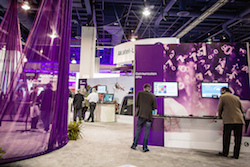LTE-A networks that use a mix of both macro and small cell technology covering a range of frequency bands can significantly increase performance and efficiency, Bell Labs has claimed.
A report from the research arm of Alcatel-Lucent concluded that heterogeneous (HetNet) mobile networks using a high number of small cells saw over 50 percent energy savings compared to networks that replied on macro cells alone.
The company said while base stations positioned near one other can disrupt mobile signals, when they are combined with proper interference coordinating, inter-cell interference (ICI) was reduced and network performance increased.
The result was an observed 10 percent increase in uplink throughput and a 50 percent gain in downlink performance, Bell Labs claimed.
For the test, Bell Labs developed a prototype base station transmitter covering 2.1GHz and 2.6GHz spectrum, while the receiver module covered the 1900MHz, 800MHz and 2500MHz frequency bands.
The “IntelliSpektrum” research project was conducted in partnership with the Fraunhofer Institute for Applied Solid State Physics, the Fraunhofer Heinrich-Hertz-Institute and Intel. The aim of the project was to demonstrate how base stations could be applied to high-traffic networks to increase capacity whilst maintaining end-user quality.
Dr. Thomas Haustin, Head Wireless Networks at the Fraunhofer Heinrich-Hertz-Institute, said the project would help drive the development of “game-changing” communications technology.
Marcus Weldon, Bell Labs President and CTO of Alcatel-Lucent, commented: “The IntelliSpektrum research project is a perfect example of how Alcatel-Lucent and Bell Labs are collaborating with other industry leaders to innovate.
“Findings from the project underscore the critical importance of small cells and prove that that by deploying a mix of base station radios operators will see better energy efficiency and increased network performance – thereby improving their customers’ experience and increasing efficiency.”
Read more:
Share 700MHz spectrum between 800MHz license holders, says DNA
1800MHz dominated LTE landscape in 2014, with surge in LTE-A


